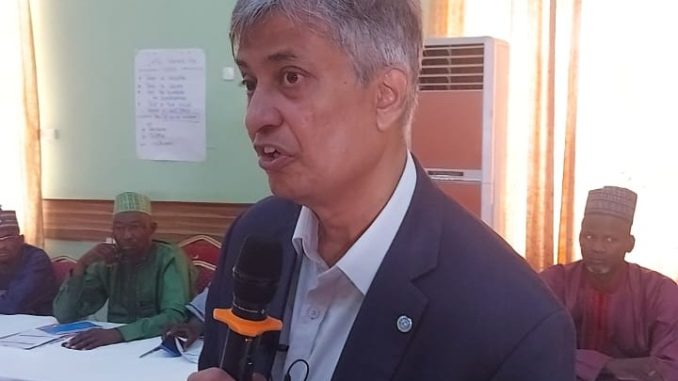
The United Nations Children’s Fund (UNICEF) has expressed concern that Nigeria has the largest number of out-of-school children globally, with only 63 percent of primary school children regularly attending school.
The UN agency also lamented that a staggering 10.2 million primary school-age children and an additional 8.1 million at the junior secondary level are out of school in Nigeria.
This was stated by the Chief of Field Office, Bauchi UNICEF Field Office, Dr Tushar Rane in a Goodwill message during a 2-day Regional Stakeholders Engagement Meeting on the Out-of-School Children and the Retention, Transition and Completion Models in Bauchi, Gombe and Adamawa states held at Emerald Hotel Hall, Gombe.
UNICEF further expressed deep concern with the rate of out-of-school children, and low learning achievement in the country, especially in the North-East and North-West sub-regions
Citing Multiple Indicator Cluster Survey 2021, Rane said only 84 percent of children effectively transition to junior secondary education after primary school completion.
He added that, “Less than 50 percent – about 2.4 million – of the 5.9 million children who commence Primary Grade 1 annually in Nigeria persist to the conclusion of Junior Secondary Grade 3.”
The UNICEF CFO further said that, “An analysis of the MICS reports between 2011 and 2021 shows an increase in dropout rates across all genders at the primary level especially in the northern part of the country. Specifically, the primary-level dropout rate rose from 1% in 2011 to 5% in 2021.”
“A similar upward trend is noticeable when considering wealth quintiles. For students belonging to the poorest wealth quintile, the primary-level dropout rate increased from 2% in 2011 to 6% in 2021. Among students in the richest wealth quintile, the dropout rate also showed an increase, rising from 1% in 2011 to 4% in 2021,” he added.
He added that, “This consistent pattern suggests that, compared to a decade ago, the education system in Nigeria faces challenges in retaining students and ensuring their continued education across all the regions and the problem persists in the North-East and North-West.”
According to him, “Numerous obstacles prevent consistent school attendance, timely enrolment, and completion of education for all Nigerian children. Some of these obstacles include inadequate evidence-based policy and planning, limited budget allocation, significant shortages of qualified teachers and classrooms, poor infrastructure, cultural norms, health and safety worries, and dependence on children for income and household tasks.”
Tushar Rane assured that in collaboration with the Universal Basic Education Commission (UBEC), “We have developed the “National Framework of Action to Reduce the Number of Out-of-School Children in Nigeria” and the “Retention, Transition, and Completion Model” which ensures inclusive and equitable quality education and promotes lifelong learning opportunities for all.”
“As you will see over the next two days, this framework and RTC model will guide your respective states in confronting the OOSC phenomenon, strengthening the community accountability and mobilization, use of innovations and technologies to increase access to quality learning and financing of OOSC in the state,” he said.
He then encouraged open dialogue, active participation, and the sharing of insights during the two-day engagement saying, “I envisage that after this meeting, we will have clear, targeted, and state-specific strategies that will further ensure that we reduce the rate of out-of-school children and enhance retention, transition, and completion.”
In her remarks, Gombe State Commissioner of Education, Prof Aishatu Maigari said that, “It is going to be very educative, very incisive and it is going to be a robust programme and policy that will be used to mop up the out-of-school children, to make sure they returned to school, to ensure that they stay in school.”
She added that, “To facilitate smooth transition from primary to Junior Secondary school to Senior Secondary School and then they complete to become somebody in the society,” saying, “when a child completes Secondary school, their livelihood will change, especially girls, it increases by 10 percent.”
Maigari quoted research showing that when a father is interested in the education of his girl child, the girls go farther than expected. “I always call on the parents to be committed to the education of their children, especially the girls.”
“Let us look at the fathers, are we doing what we are expected to do as fathers? This is critical thinking because when you leave out the father out of these out-of-school children issues, then there is a gap,” She stressed.
Maigari concluded narrating, “Let me let you know that, in my family, my father has 6 girls and 11 boys, we used to call them a football team. All the 6 girls, we now have 4 PhD holders, 2 Professors, one is a Director of Finance somewhere.”
“That is the reason I said that when you stand by your girls in educational pursuit as men, you have done the right thing. I hope that here, we are going to change the narrative,” she charged participants.
Leave a Reply